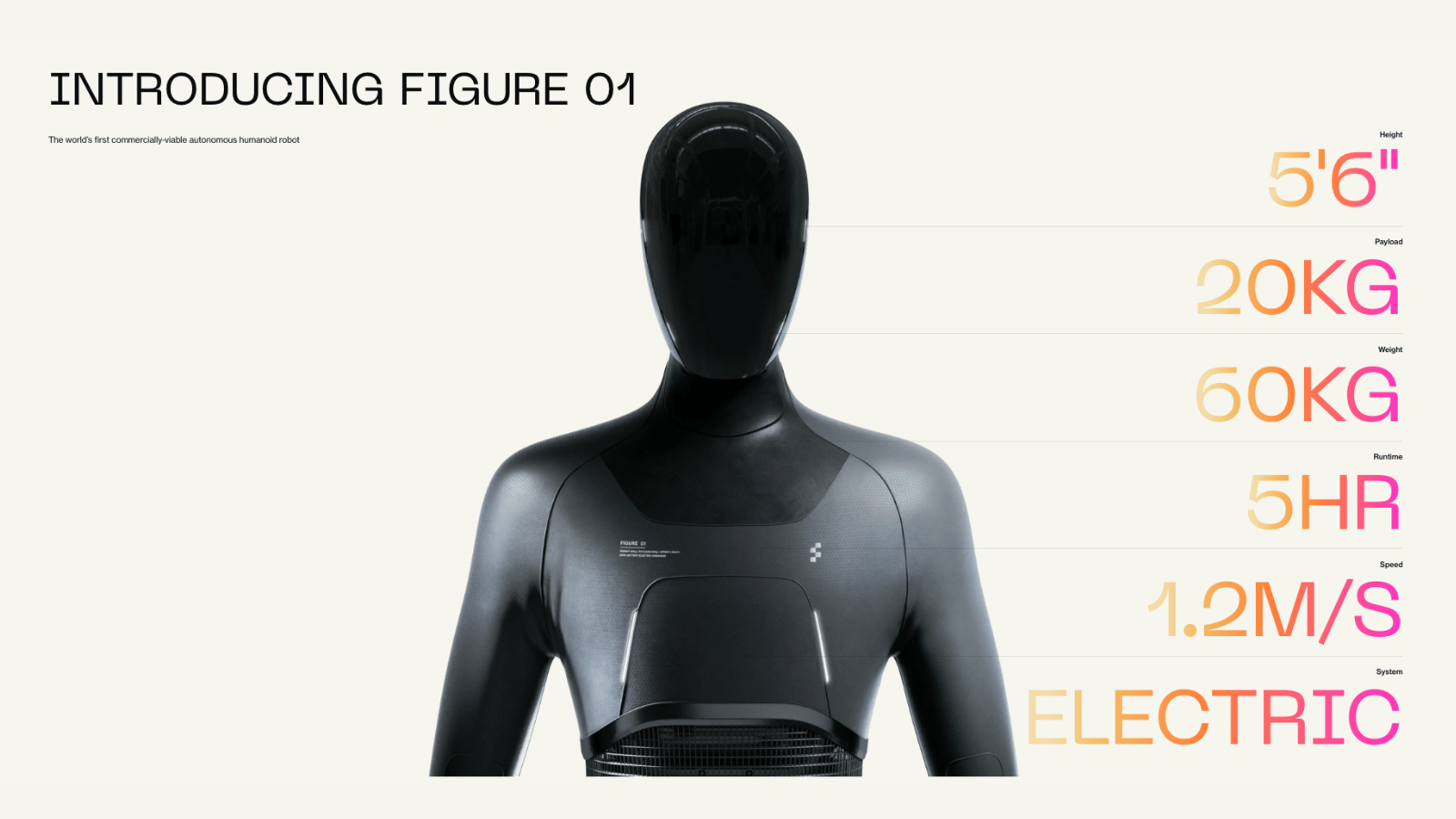A commercial humanoid robot is apparently the next target for several companies. Figure, a new startup, reckons it has what it takes to be the first to market with one. Its own creation is called Figure 01 and it doesn’t exist yet. But that’s more or less fine. Aside from Boston Dynamic’s Atlas, nor do any of the others. And Atlas has other things to its mind beyond turning up in stores.
The company is making some seriously bold promises about what its to-be-created robot will be capable of. It will have, according to its creators, “the ability to think, learn, and interact with its environment”. It’s also “…designed for initial deployment into the workforce to address labor shortages and [will] over time lead the way in eliminating the need for unsafe and undesirable jobs”.
An impressive Figure of a robot?
That sounds like a tall order for any company but Figure isn’t just any company if its staff loadout is any indication. IEEE Spectrum points out that several noted robotics figures are involved in the creation of this robot. Chief technology officer Jerry Pratt spent twenty years at the Florida Institute for Human and Machine Cognition (IHMC). The company’s founder, Brett Adcock, also founded Archer Aviation, which successfully developed and is testing an electric VTOL (vertical takeoff and landing) aircraft.
And then there’s the rest of the staff. They’re taken from the IHMC, Boston Dynamics, Tesla, Waymo, and Google X, the search giant’s experimental division. All told, it’s quite a cluster of brains to throw at the development of commercial humanoid robots.

Figure 01 is the first design the company has in mind. The robot would stand about 5.6″ in height, weigh 60 kilograms, run for five hours on a charge, and handle 20 kilograms at a time. It’ll be a “fully electromechanical humanoid, including hands… with the physical capabilities of a non-expert human”.
That’s very ambitious on its own but the company intends to make loads of these things. There are two reasons for this. Figure 01 is supposed to solve a labour crisis and eventually take on jobs that are unsafe for humans. But these things are expensive to produce but the company believes that making enough of them at a time will bring the cost down to a manageable level for everybody.
There are also more lofty aims for the in-development humanoid. Literally. There’s potential for the robot, or one of its descendants, to take a role in space exploration. Of course, for that to happen it’ll have to perform better than (and be better than) Tesla’s Optimus and Xiaomi’s CyberOne robots. In the case of CyberOne, that may not be too difficult a task.
Source: IEEE Spectrum